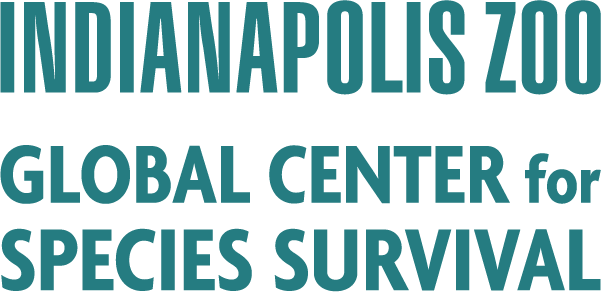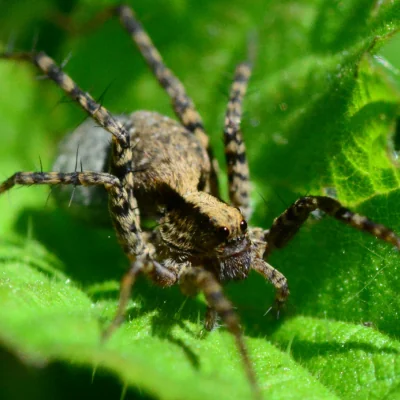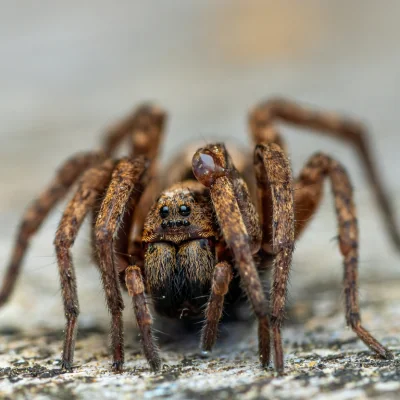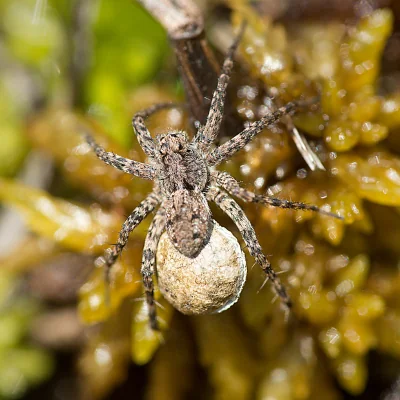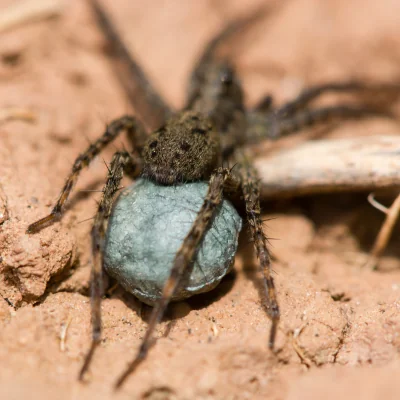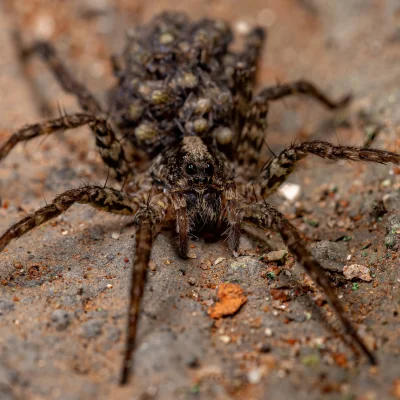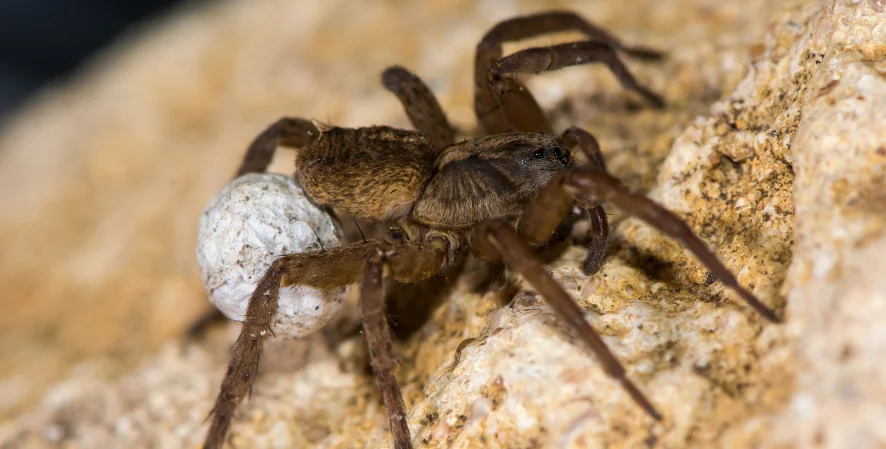
SPIDERS, DOCTORS & JOURNALISTS
Once upon a time, we published a thread on Twitter (now called X) about the Joro spider after sensationalized headlines stoked fear among Americans that the colorful and rather large arachnid was “invading” the southern United States. Our thread aimed to set the record straight, debunking false or misleading claims about the East Asian species with a growing non-native population in Georgia. It’s time for another fact-finding spider mission. This time, we’re talking about wolf spiders.
Perhaps you saw the headline, “Wolf spider lays eggs in man’s toe during cruise.” Sounds terrifying, even to those of us who don’t suffer from arachnophobia. Surely this can’t be true! But the report was published by BBC News, which is a well-respected source of information. Hmm. This may lead you to believe that Colin Blake, while on a cruise ship in France, was bitten on the toe by a Peruvian wolf spider. Blake says the ship’s doctor found “toxins” and “eggs” in a large wound on the big toe of Blake’s right foot. The article even includes graphic pictures of Blake’s toe wound! Yet… there are no pictures of the alleged spider eggs or baby spiders.
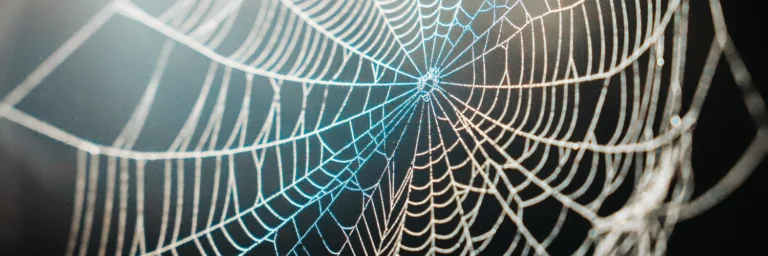
We checked in with our resident arachnologist, Sérgio Henriques, who is the Global Center’s Invertebrate Conservation Coordinator and Co-chair of the IUCN SSC Spider and Scorpion Specialist Group as well as a fierce defender of accuracy and spiders. Here’s what Sérgio had to say about the report:
- Wolf spiders are predators. They feed on insects and other small animals. They do not – and biologically CANNOT – lay eggs inside someone’s toe.
- Wolf spider mothers are well known for building egg sacs for their young. The mothers carry these egg sacs with them, guarding the offspring inside. Spider eggs cannot survive inside a human body. They are not parasites.
- There are many species of wolf spiders in the country of Peru, and the name “Peruvian wolf spider” is not a well-defined common name for any specific species.
- There are a small number of spider species with the ability to pierce human skin. When spider bites do happen, it is typically bacteria getting into the wound that leads to infection. This can happen with any cut or puncture to human flesh.
- With our current knowledge, it is nearly impossible to identify a spider species from a bite alone. So, without seeing the actual spider, “presumed bites” cannot be accurately diagnosed. More often than not, such “bites” are the result of other types of injuries that are blamed on a spider due to prejudice.
Sérgio hopes this information reduces fear and shines a spotlight on the spread of misinformation when it comes to spiders. He also hopes that medical professionals and journalists practice due diligence when it comes to reports of spider bites. Arachnologists are rarely consulted in such cases, despite being authorities on the subject.
Unlike BBC News, Business Insider DID contact spider experts when reporting on Blake’s claims. They spoke with Lena Grinsted, an evolutionary biologist who studies spider behavior at the University of Portsmouth. She told Business Insider, “Spiders do not lay eggs in other organisms. Not humans, not any other organisms… This story has really got me riled up quite a lot. So so outrageously inaccurate.”
Business Insider also spoke with Sara Goodacre, a professor of evolutionary biology and creator of the Spider in da House spider identification app. She remarked on the frequency of misdiagnosis of reported spider bites, saying that doctors and nurses typically treat such injuries with antibiotics or antifungal medications, “that we know absolutely make no difference to spider venom.”
Remember, spiders do not pose a deadly threat to humans. The real danger is arachnophobia. Not only does our fear of spiders sometimes put us in harm’s way as we try to flee from a spider, but it also leads to the unnecessary extermination of spiders. Arachnids play a key role in ecosystems. A truly terrifying thought is what our world might look like without them.
This blog was a collaboration between experts at the Global Center for Species Survival, including Invertebrate Conservation Coordinator Dr. Sérgio Henriques.
Published November 28, 2023
